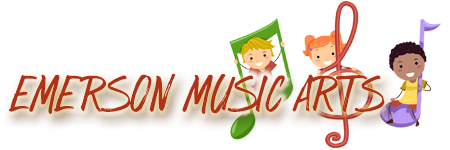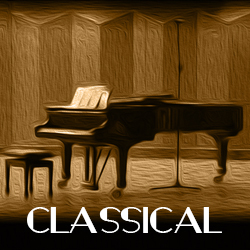Lessons are for beginners through advanced, ages 6 and up. Learning includes the weekly piano lesson, monthly master classes and two recitals. Here are the styles that you can learn. Choose one or we can combine some styles to create your own unique program.
- All Eras
- Technique, Theory & Ear Training
- Monthly Master Class
- 2 Annual Recitals
- OMTA Evaluations
Interpretation – Baroque, Classical, Romantic, Impressionistic and Contemporary pieces are studied.
Technique & Music Theory – Students will gain an understanding of keys, intervals, melody and harmony by completing weekly playing and writing assignments. Most importantly, they will learn to recognize these elements in current lesson pieces and apply this knowledge to the memorization of pieces.
Master Classes & Recitals – Students will have a master class once a month to perform for one another. Each master class also provides an opportunity to give and receive constructive comments in a positive environment and serves as a way to prepare for the recitals. Each performance creates more confidence for the next which makes the recitals a fun and enjoyable experience.
Ear Training – Students will practice pitch and chord recognition and learn to transcribe melodies. Students are encouraged to collect recordings of classical music and attend concerts.
OMTA evaluations – This is an optional program provided by the State of Oregon. Evaluations will test the student in performing all aspects of technique such as scales, chords and arpeggios; and performance of the Baroque, Classical, Romantic, Contemporary and Impressionist styles.
- Read Jazz Charts
- Chord Voicings and Scales
- Play By Ear
- Monthly Jazz Jam & Recitals
- OMTA Evaluations
Read Jazz Charts – Students learn to read lead sheet music and to improvise 12-bar blues and jazz standards from the “Real Book.” We will use the following process:
- Learn the melody through singing it and transcribing to other keys
- Write and practice chord voicings that relate to the composition
- Listen to and play along with recordings of the composition
- Practice with MP3 play along tracks that students will receive via e-mail
- Practice improvisation over the composition using a series of specific exercises
Voicings & Scales – Students practice scales, chords, ii-V-I voicings and arpeggios in all keys with a special focus on those that are used to improvise in current assigned jazz compositions.
Practice ear training – Students will learn to recognize jazz scales and chords. They will learn to play by ear through call and response exercises and transcribing solos by the great jazz masters.
Jazz Jam Sessions & Recitals – Jazz jam sessions are held monthly to provide the opportunity for students to perform their jazz compositions with a drummer and bassist.
OMTA evaluations – This is an optional program provided by the State of Oregon. Evaluations will test the student in performing all aspects of jazz technique such as scales and chords; and performance of jazz standards.
- Read Lyric/Chord Charts
- Basic Theory & Voicings
- Play By Ear
- Strings, B3 Organ, Rhodes/Wurli
- Reason/Finale/Pro-Tools
Read Charts – Students will learn to read lyric/chord charts and lead sheet music.
Basic Theory & Voicings – Students will gain an understanding of chord symbols and scales by completing weekly playing and writing assignments; with a focus on the keys of the songs they are learning.
Play By Ear – Students will learn songs and keyboard parts by ear with a goal of being able to chart a song by ear.
Strings, B3 Organ, Rhodes – Students will learn to play the correct voicings and parts for specific keyboard sounds.
Reason/Finale/ProTools – Students who are interested can learn how to use the Reason program for performance, the Finale program for creating charts and the ProTools software for recording songs.






